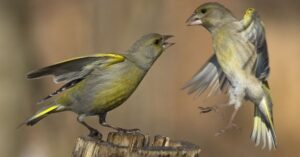Every spring, millions of ruby-throated hummingbirds embark on an astonishing journey that spans hundreds of miles. Understanding the intricacies of hummingbird migration, particularly the ruby throated hummingbird migration route, offers insights into their remarkable navigation skills and survival strategies.
This article delves into the fascinating patterns of these tiny avian travelers, shedding light on their migration habits and the challenges they face along the way. By exploring these topics, readers will gain a deeper appreciation for one of nature’s most extraordinary phenomena.
About Ruby-Throated Hummingbirds
Ruby-throated hummingbirds, the only breeding hummingbird species in eastern North America, exhibit remarkable migration patterns that intrigue bird enthusiasts. These tiny wonders begin their journey south as the days shorten and temperatures cool, usually around mid to late August. This migration is not just a seasonal change; it’s a crucial survival strategy, as they seek warmer climates where food sources remain abundant.
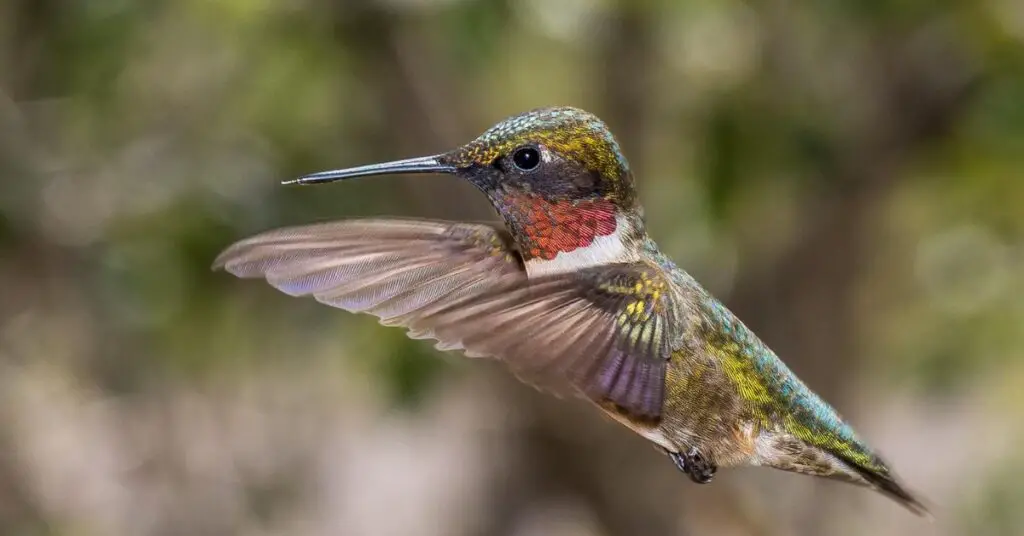
As autumn approaches, ruby-throated hummingbirds prepare for their long trek to Central America, covering distances of up to 3,000 miles. They rely on a mix of instinct and memory to navigate their route, often stopping to refuel at feeders and flowering plants along the way.
For those asking when do hummingbirds go south, it’s essential to note that these birds are not only driven by the changing seasons but also by the availability of nectar-rich food sources, making it vital for backyard bird watchers to keep feeders filled during this critical time.
Ruby Throated Hummingbird Migration Route
Ruby-throated Hummingbirds begin their remarkable journey south as early as mid to late August. This migration is not merely a seasonal shift; it’s an instinctual drive that compels these tiny birds to travel over 2,000 miles to their wintering grounds in Central America.
As autumn approaches, the days shorten and food sources dwindle, signaling to these creatures that it’s time to embark on their long trek.
These birds are known for their incredible navigation skills, utilizing the sun’s position and Earth’s magnetic fields to guide them through unfamiliar territories. As they traverse the Gulf of Mexico, they face daunting challenges, yet their determination is awe-inspiring.
When Do Ruby Throated Hummingbirds Migrate?
These hummingbirds begin their migration from their wintering grounds in Central America around late February to early March, making their way northward toward breeding territories in the United States and Canada.
They traverse the Gulf of Mexico, a perilous stretch of water, they rely on favorable weather conditions and wind patterns to guide them safely to the shores of Texas, often arriving by mid-March.
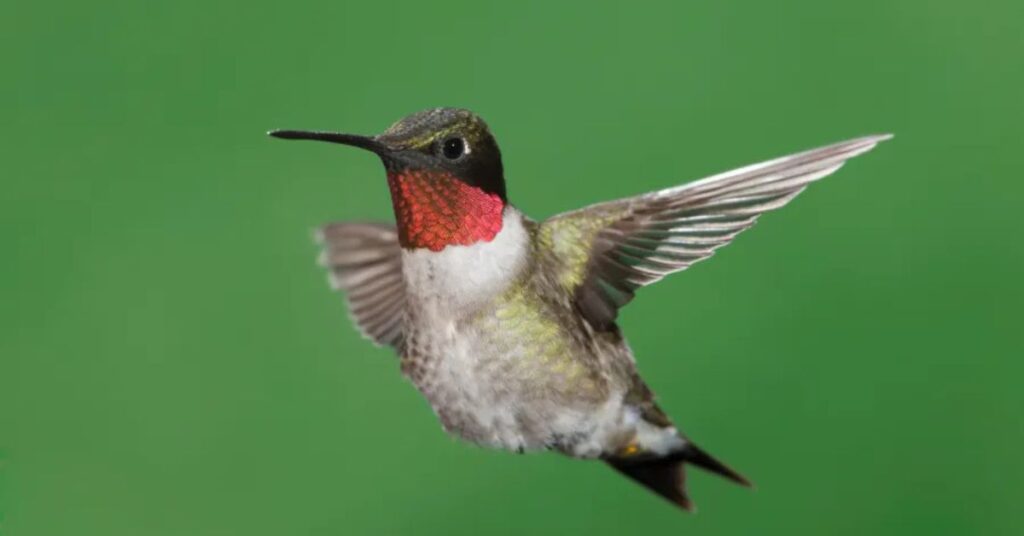
The Texas diverse habitats, abundant flowering plants, and nectar-rich food sources attract thousands of hummingbirds each year. Birdwatchers eagerly anticipate the arrival of these dazzling creatures, as their presence signals the onset of spring.
By April, many ruby-throated hummingbirds have settled into their nesting sites across the eastern United States, showcasing the importance of Texas as a vital link in their migratory journey.
How To Help During Migration
During the Texas hummingbird migration, nature enthusiasts can play a crucial role in supporting these remarkable travelers. One of the most effective ways to help is by creating a welcoming environment for ruby-throated hummingbird juveniles.
These young birds, often less experienced than their adult counterparts, rely on abundant food sources to fuel their long journey. Planting native flowering plants that bloom throughout late summer and early fall will provide essential nectar, allowing them to build strength before their migration.
Setting up hummingbird feeders filled with a sugar-water solution can significantly aid ruby-throated hummingbird juveniles as they prepare for their journey. It’s important to maintain these feeders regularly, ensuring they are clean and filled with fresh nectar. By offering a reliable food source, you not only contribute to the well-being of these young birds but also create an opportunity to observe their fascinating behaviors up close.
Engaging in citizen science initiatives, such as reporting sightings or participating in local bird counts during the Texas hummingbird migration, further enriches our understanding of these incredible creatures and helps protect their migratory routes.
Returning South
As the seasons shift, Texas becomes a crucial waypoint in the incredible journey of hummingbird migration. Among the most fascinating travelers are the ruby-throated hummingbird juveniles, who embark on their first migration southward.
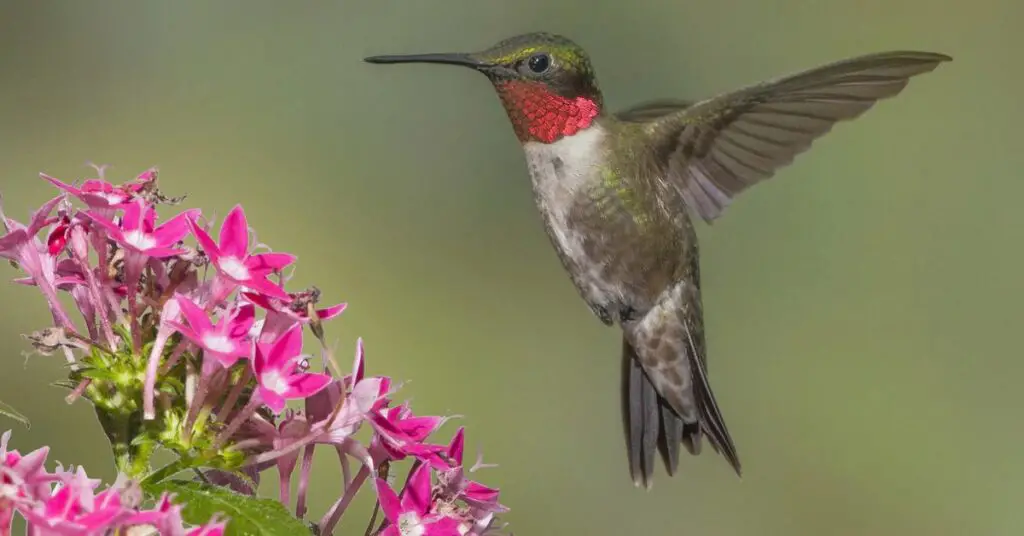
These young birds, born in the northern regions of North America, face daunting challenges as they navigate vast distances to reach their wintering grounds.
During this period, backyard feeders become vital lifelines for the ruby throated hummingbird juvenile, drawing them in with the promise of nectar. Birdwatchers can play a significant role by maintaining feeders filled with fresh sugar-water solution, creating an oasis for these delicate creatures.
Observing their antics as they flit about is not only a joy but also a reminder of the resilience and instinctual drive inherent in nature. As these young birds prepare to return south, they embody the spirit of adventure, reminding us of the intricate connections between migratory patterns and the ecosystems that support them.
Discover More About Ruby-Throated Hummingbirds
As spring approaches, the female ruby throated hummingbird embarks on an extraordinary journey from her wintering grounds in Central America to the lush landscapes of North America. This migration is not just a physical journey; it’s a testament to their resilience and instinctual navigation skills, as they traverse vast distances, often covering up to 500 miles non-stop over the Gulf of Mexico.
Once in Texas, these vibrant birds become a symbol of renewal and vitality. The female ruby-throated hummingbird is particularly fascinating, as she plays a crucial role in establishing nesting sites. After arriving, she meticulously selects locations with abundant nectar sources, which are vital for feeding her young.
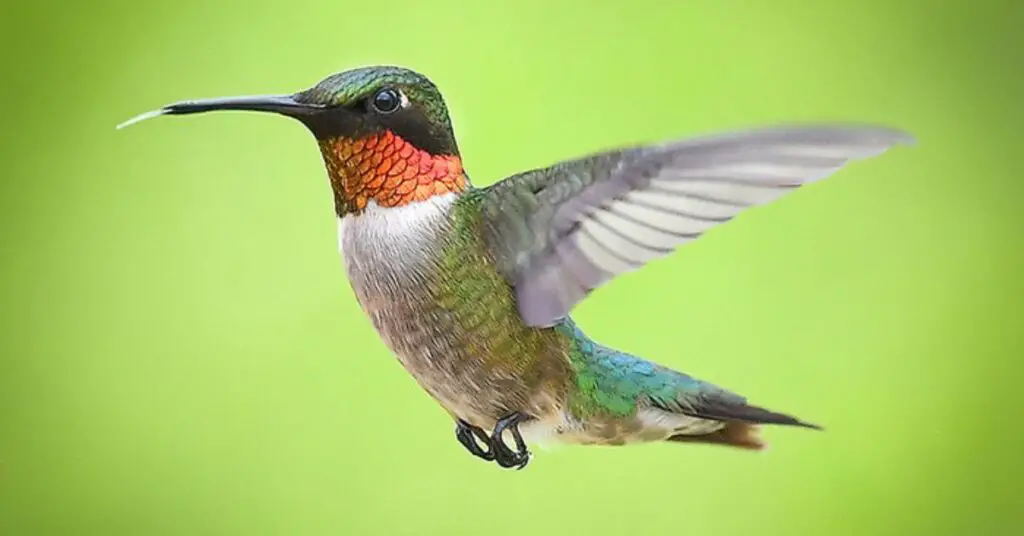
This unique behavior highlights the importance of local flora; planting native flowering plants can attract these beautiful creatures and support their migratory journey. By understanding the nuances of hummingbird migration in Texas, we can appreciate the delicate balance of nature and the vital role these tiny birds play in our ecosystem.
Conclusion
The migration of the Ruby-Throated Hummingbird is a remarkable natural phenomenon that showcases the resilience and adaptability of these tiny birds. As they travel thousands of miles from their breeding grounds in North America to their wintering habitats in Central America, they rely on a combination of instinct, environmental cues, and abundant food sources.
Understanding their migratory patterns is crucial for conservation efforts, as habitat loss and climate change pose significant threats to their survival.
FAQ’s
When Do Hummingbirds Migrate South?
Hummingbirds typically migrate south in response to changing environmental conditions, primarily driven by the availability of food sources and temperature changes. In North America, most species begin their migration in late summer to early fall, around August to October.
Where Do Hummingbirds Live?
Hummingbirds are primarily found in the Americas, with the majority of species concentrated in Central and South America. They thrive in a variety of habitats, including tropical rainforests, mountainous regions, and even deserts.
What Is The Life Span Of A Ruby-Throated Hummingbird?
The ruby-throated hummingbird, known scientifically as Archilochus colubris, has a life span that typically ranges from 3 to 5 years in the wild. Some individuals have been documented living up to 9 years under optimal conditions.
- How To Keep Bees Away From Hummingbird Feeders - March 20, 2025
- How To Attract Owls To Your Yard - March 11, 2025
- Breeding Season For Wild Birds - March 9, 2025








